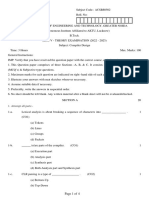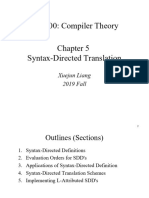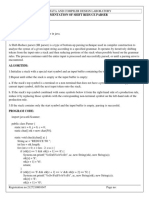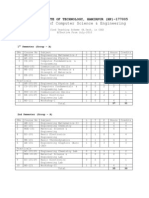0% found this document useful (0 votes)
40 views4 pagesCompipler Questions
This document is an examination paper for the Compiler Design course at the University of Petroleum and Energy Studies, covering topics such as parser generators, optimization techniques, syntax-directed translation, and code generation. It consists of multiple sections with questions requiring theoretical explanations, practical code conversions, and the construction of parsing tables and intermediate representations. The exam is designed for B.Tech students in their 4th and 6th semesters, with a total of 100 marks allocated for each section.
Uploaded by
cafebilling001Copyright
© © All Rights Reserved
We take content rights seriously. If you suspect this is your content, claim it here.
Available Formats
Download as PDF, TXT or read online on Scribd
0% found this document useful (0 votes)
40 views4 pagesCompipler Questions
This document is an examination paper for the Compiler Design course at the University of Petroleum and Energy Studies, covering topics such as parser generators, optimization techniques, syntax-directed translation, and code generation. It consists of multiple sections with questions requiring theoretical explanations, practical code conversions, and the construction of parsing tables and intermediate representations. The exam is designed for B.Tech students in their 4th and 6th semesters, with a total of 100 marks allocated for each section.
Uploaded by
cafebilling001Copyright
© © All Rights Reserved
We take content rights seriously. If you suspect this is your content, claim it here.
Available Formats
Download as PDF, TXT or read online on Scribd
/ 4























































































